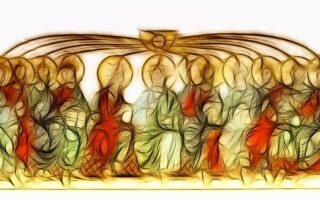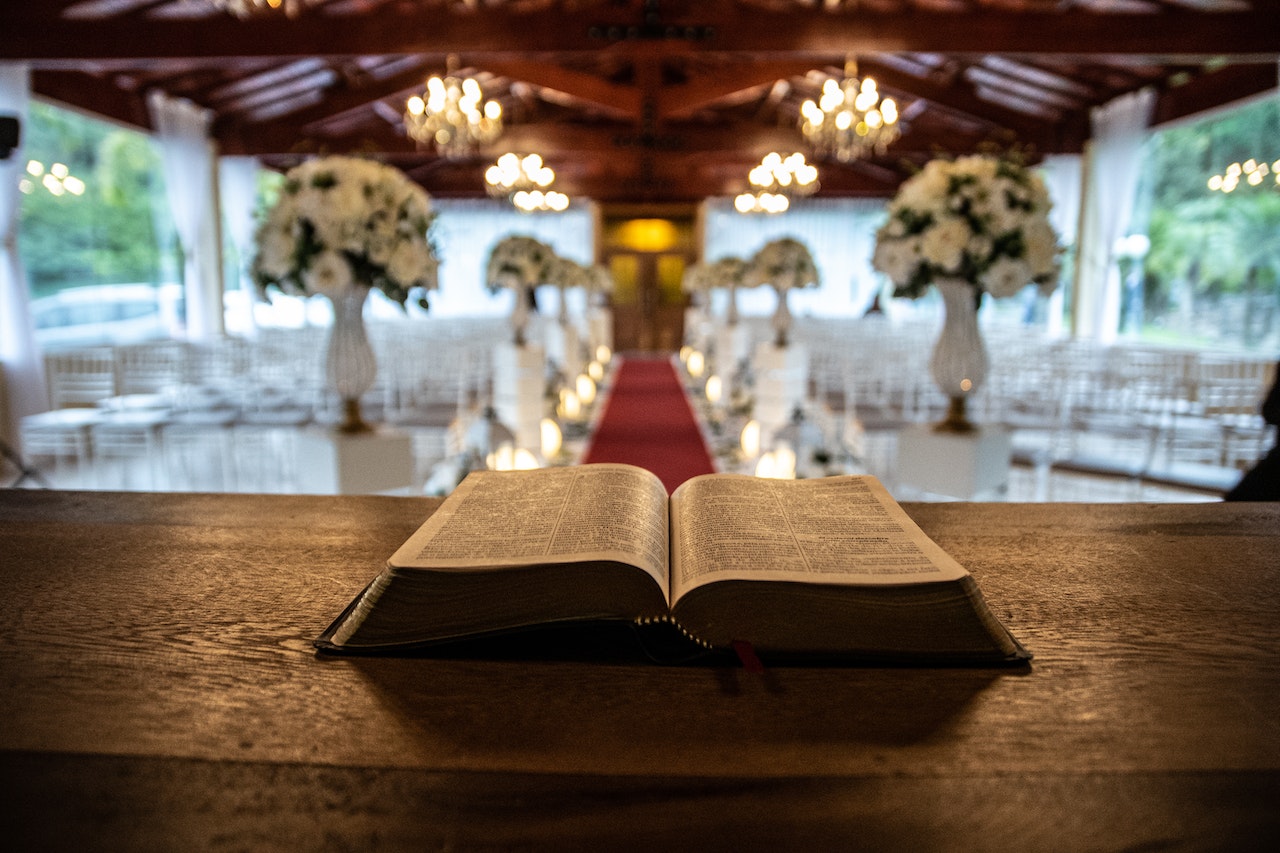Orthodox Christians make the sign of the cross as a physical and symbolic gesture of their faith. This act involves specific movements and prayers, which hold deep significance within the Orthodox tradition.
Table of Contents
The Symbolism Behind the Orthodox Cross Gesture
Have you ever wondered why Orthodox Christians make the sign of the cross in a different way than other Christians? The gesture of crossing oneself is a common practice among Orthodox believers, and it holds deep symbolism and meaning. In this article, we will explore the significance behind the Orthodox cross gesture and shed light on its rich history.
To understand the symbolism behind the Orthodox cross gesture, we must first delve into its origins. The practice of crossing oneself can be traced back to the early days of Christianity, when believers would make the sign of the cross on their foreheads, lips, and hearts. This act was seen as a way to invoke the presence and protection of the Holy Trinity – the Father, Son, and Holy Spirit.
In the Orthodox tradition, the sign of the cross is made with the right hand, starting from the forehead, then moving down to the chest, and finally from the right shoulder to the left. This unique gesture is a reflection of the Orthodox belief in the Holy Trinity and the incarnation of Christ. By crossing themselves in this manner, Orthodox Christians are affirming their faith in the Father, Son, and Holy Spirit, as well as their belief in the crucifixion and resurrection of Jesus Christ.
The symbolism behind each part of the Orthodox cross gesture is profound. When Orthodox believers touch their forehead, they are acknowledging the Father, who is the source of all wisdom and knowledge. This gesture serves as a reminder to seek God’s guidance and wisdom in all aspects of life.
Moving down to the chest, the Orthodox cross gesture signifies the Son, Jesus Christ, who became incarnate and dwelt among us. By touching their hearts, believers are expressing their love and devotion to Christ, as well as their desire to have Him dwell within them.
Finally, crossing from the right shoulder to the left represents the Holy Spirit, who proceeds from the Father and is sent by the Son. This part of the gesture symbolizes the power and presence of the Holy Spirit in the life of a believer. It serves as a reminder to rely on the guidance and strength of the Holy Spirit in all endeavors.
The Orthodox cross gesture is not merely a physical act; it is a spiritual practice that connects believers to the divine. It is a way for Orthodox Christians to express their faith and devotion, as well as a means of seeking God’s blessings and protection. By making the sign of the cross, believers are reminded of their identity as children of God and are encouraged to live in accordance with His teachings.
In conclusion, the Orthodox cross gesture holds deep symbolism and meaning for Orthodox Christians. It is a reflection of their belief in the Holy Trinity and the incarnation of Christ. Each part of the gesture represents a different aspect of the divine – the Father, Son, and Holy Spirit. By crossing themselves in this unique manner, Orthodox believers affirm their faith and seek God’s presence and protection. So, the next time you see an Orthodox Christian making the sign of the cross, remember the rich symbolism behind this ancient practice.
The Historical Origins of the Orthodox Cross Gesture

Have you ever wondered why Orthodox Christians make the sign of the cross in a slightly different way than other Christians? The gesture, known as the Orthodox Cross, has a rich historical background that dates back to the early days of Christianity. In this article, we will explore the origins of this unique gesture and shed light on its significance in the Orthodox faith.
To understand the historical origins of the Orthodox Cross, we need to delve into the early Christian era. In the first centuries after Christ, the cross was not only a symbol of suffering and death but also a symbol of victory and salvation. Early Christians would often trace the sign of the cross on their foreheads, chests, and shoulders as a way to proclaim their faith and seek protection from evil forces.
As Christianity spread throughout the Roman Empire, different regions developed their own variations of the cross gesture. In the East, particularly in Byzantium, the Orthodox Cross gesture began to take shape. Instead of using three fingers to represent the Holy Trinity, as is common in Western Christianity, Orthodox Christians use two fingers pressed together to symbolize the dual nature of Christ – fully human and fully divine.
The use of two fingers in the Orthodox Cross gesture can be traced back to the ancient Byzantine Empire. During this time, the emperor Justinian I issued a decree that required all Christians to use two fingers when making the sign of the cross. This decree was seen as a way to differentiate Orthodox Christians from other religious groups and solidify their identity.
Over time, the Orthodox Cross gesture became deeply ingrained in the liturgical practices of the Eastern Orthodox Church. It is performed by touching the forehead, chest, right shoulder, and then the left shoulder, while saying the words, “In the name of the Father, and of the Son, and of the Holy Spirit, Amen.” This ritual is repeated throughout various parts of the Orthodox liturgy, emphasizing the central role of the cross in the Orthodox faith.
The significance of the Orthodox Cross gesture goes beyond its historical origins. For Orthodox Christians, making the sign of the cross is a deeply personal and spiritual act. It serves as a reminder of Christ’s sacrifice on the cross and a way to invoke His presence and protection. The gesture is also believed to ward off evil and bring blessings upon the individual.
In addition to its religious significance, the Orthodox Cross gesture is also a visible expression of one’s faith. Orthodox Christians often make the sign of the cross in public places, such as before meals or when passing by a church. This outward display of faith serves as a witness to others and a reminder of the presence of God in their lives.
In conclusion, the Orthodox Cross gesture has a rich historical background that dates back to the early days of Christianity. Its origins can be traced to the Byzantine Empire, where it became an integral part of the liturgical practices of the Eastern Orthodox Church. Today, the Orthodox Cross gesture continues to hold deep religious and personal significance for Orthodox Christians, serving as a visible expression of their faith and a reminder of Christ’s sacrifice.
Different Variations of the Orthodox Cross Gesture
Have you ever wondered why Orthodox Christians make the sign of the cross in a slightly different way than other Christians? The Orthodox cross gesture is a unique and beautiful tradition that holds deep meaning for those who practice it. In this article, we will explore the different variations of the Orthodox cross gesture and delve into the significance behind each one.
One of the most noticeable differences in the Orthodox cross gesture is the use of three fingers. Instead of using the thumb, index, and middle finger together, Orthodox Christians use the thumb, index, and middle finger together while tucking the ring finger and pinky finger into the palm. This represents the Holy Trinity – the Father, Son, and Holy Spirit – while the tucked fingers symbolize the two natures of Christ, divine and human.
Another variation of the Orthodox cross gesture is the direction in which it is made. While many Christians make the sign of the cross from left to right, Orthodox Christians do it from right to left. This is because the right side is considered the side of honor and power, symbolizing Christ’s victory over sin and death. By crossing themselves in this direction, Orthodox Christians are affirming their faith in Christ’s triumph and their desire to follow in His footsteps.
In addition to the direction, the Orthodox cross gesture also involves touching specific parts of the body. When Orthodox Christians make the sign of the cross, they touch their forehead, chest, right shoulder, and left shoulder in a specific order. This sequence has a profound meaning. By touching the forehead, they acknowledge that their thoughts and mind belong to God. By touching the chest, they recognize that their heart and emotions are dedicated to God. By touching the right shoulder, they affirm their belief in Christ’s divinity. And finally, by touching the left shoulder, they acknowledge their acceptance of Christ’s sacrifice and their commitment to follow Him.
It is important to note that while there are variations in the Orthodox cross gesture, the underlying meaning remains the same. The gesture serves as a constant reminder of the central tenets of the Christian faith and a way to express devotion and reverence. It is a physical act that connects the believer to the divine and reinforces their commitment to live a life in accordance with God’s teachings.
The Orthodox cross gesture is not just a ritualistic action; it is a deeply personal and spiritual experience. It is a way for Orthodox Christians to express their faith, seek God’s protection, and invoke His blessings. Whether it is done in private prayer or during a church service, the Orthodox cross gesture is a powerful symbol of devotion and a tangible expression of one’s relationship with God.
In conclusion, the Orthodox cross gesture is a unique and meaningful tradition within the Orthodox Christian faith. Its variations in finger placement, direction, and touch serve to remind believers of the Holy Trinity, Christ’s victory, and their commitment to follow Him. This gesture is not just a physical act but a spiritual connection to the divine. So, the next time you see an Orthodox Christian making the sign of the cross, remember the deep significance behind this beautiful tradition.
The Spiritual Significance of Crossing Oneself in Orthodox Christianity
Orthodox Christianity is known for its rich traditions and rituals, and one of the most recognizable practices is the act of crossing oneself. This simple yet profound gesture holds deep spiritual significance for Orthodox believers, serving as a constant reminder of their faith and connection to God.
When Orthodox Christians cross themselves, they do so by touching their forehead, chest, right shoulder, and left shoulder, forming the shape of a cross. This physical act is accompanied by a prayer, often reciting the words, “In the name of the Father, and of the Son, and of the Holy Spirit, Amen.” This prayer invokes the Holy Trinity, the central belief of Orthodox Christianity.
The act of crossing oneself is not merely a mechanical motion; it is a deliberate and intentional act of devotion. It is a way for believers to express their faith and seek God’s protection and blessing. By making the sign of the cross, Orthodox Christians are reminded of their baptism, where they were marked with the sign of the cross and received into the Church.
The significance of each touchpoint during the crossing is also deeply rooted in Orthodox theology. When believers touch their forehead, they acknowledge God the Father, the source of all wisdom and understanding. This gesture symbolizes the mind and intellect, surrendering them to God’s guidance and wisdom.
Moving to the chest, believers recognize Jesus Christ, the Son of God, who became human to save humanity. This touchpoint represents the heart, the seat of emotions and desires. By touching their chest, Orthodox Christians offer their hearts to Christ, seeking His love and mercy.
The next touchpoint is the right shoulder, symbolizing the power and authority of God. This gesture signifies the strength and protection that believers seek from God. By touching their right shoulder, Orthodox Christians acknowledge God’s power to defend them against evil and grant them His divine grace.
Finally, the left shoulder is touched, representing the Holy Spirit, the third person of the Holy Trinity. This touchpoint signifies the sanctification and transformation that believers seek through the Holy Spirit’s presence in their lives. By touching their left shoulder, Orthodox Christians invite the Holy Spirit to guide and empower them in their spiritual journey.
The act of crossing oneself is not limited to specific moments or occasions in Orthodox worship. It is a constant practice that believers incorporate into their daily lives. Whether they are entering a church, beginning a prayer, or facing a challenging situation, Orthodox Christians instinctively cross themselves, seeking God’s presence and protection.
In addition to its spiritual significance, crossing oneself also serves as a visible witness to one’s faith. When Orthodox Christians make the sign of the cross in public, they are not ashamed to display their devotion. It is a way of proclaiming their identity as followers of Christ and inviting others to consider the beauty and truth of Orthodox Christianity.
In conclusion, the act of crossing oneself holds deep spiritual significance in Orthodox Christianity. It is a physical expression of faith, a reminder of baptism, and a way to seek God’s protection and blessing. Each touchpoint during the crossing represents a different aspect of the Holy Trinity and invites believers to surrender their minds, hearts, and lives to God. This simple yet profound gesture is a constant practice in the lives of Orthodox Christians, serving as a visible witness to their faith and an invitation for others to explore the richness of Orthodox spirituality.
Conclusion
In conclusion, Orthodox Christians cross themselves by touching their forehead, chest, right shoulder, and left shoulder while saying the words “In the name of the Father, and of the Son, and of the Holy Spirit.” This act of crossing oneself is a significant and symbolic gesture in Orthodox Christian worship and prayer.
For licensing reasons, we must provide the following notice: This content was created in part with the help of an AI.


